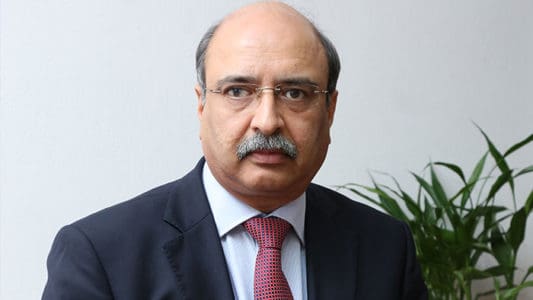
Artificial Intelligence based systems can prove beneficial in many scenarios, right from customer interactivity 24×7 x 365 to tedious back-end process automation. Renowned BFSI companies around the globe are putting AI various innovative uses. We present some of them here. These case studies, along with an in-depth view of how BFSI companies in India are planning to use AI have been featured in our report on AI in BFSI for companies in India. You can download it from here.
Chatbots and Voicebots
Bank of America’s Erica drills deep into customer data to pre-empt their needs and suggest solutions. It’s voice and chat driven to manage the customers’ money. Built by a team of 100 people, Erica is unlike other chatbots that answer simple questions. It pre-empts a customer’s needs to offer relevant advice. For instance, it analyzes customers’ withdrawal history to gauge their spending patterns and inform them if they’re running low balance. It even suggests solutions like transferring funds or sends notifications about where they can save money.
Commonwealth Bank of Australia’s Bot performs 200+ banking tasks for customers like activating cards, paying bills, sending bank statements, etc. The bank plans to first roll it out to its 6.2 million NetBank and CommBank app users, and then to the rest.
Amazon’s Echo and Facebook’s Messenger platforms extend their voicebot/chatbot technologies to companies to enhance their customer engagement. BFSI companies can’t always create in-house AI powered software from both cost and time point of view. That’s why, as of writing this report, Facebook crossed 100,000 bots on its messenger platform, while Amazon’s Alexa voice platform crossed 15,000 “skills” or voice-powered apps. These skills run on Echo products like Amazon Echo speaker, and their number has been rising rapidly.
MasterCard uses FB Messenger’s chatbot to allow its customers to review their purchase history, spending habits and account balance.
CapitalOne, a diversified bank and fortune 500 company added its voicebot ENO’s skill to Amazon’s Alexa. Customers simply enable the skill on their Alexa app and start interacting with it, like asking for account balance, paying credit card bills, etc. ENO is also available over mobile based chat.
Emma, OCBC Bank Singapore’s AI-based Chatbot answers home loan queries and generates leads. It has handled over 20,000 enquiries since January 2017 and converted 10% of them into mortgage sales prospects. Besides answering queries, it also mimics actions of a loans advisor by asking questions to determine an applicant’s loan eligibility. Emma required three months of training to become ready to handle queries.
Back-End BPM
JP Morgan Chase processes contracts faster with fewer mistakes after creating a bot called COIN. Short for Contract Intelligence, the bot uses machine learning techniques to help the bank’s lawyers analyze around 12,000 contracts for commercial loan agreements per year. COIN has cut-down loan-servicing mistakes and already saved the bank a whopping 360,000 man-hours of labor. What would take hours can now be done in minutes.
ANZ Wealth ties up with University of Technology in Sydney to explore AI based insurance under-writing and claims processing. The collaboration aims to use big data, client behavior modelling, text mining, natural language programming and social media predictive analysis for the job.
Japan’s Fukoku Mutual Life Insurance Company is planning to implement IBM’s Watson and slash 30% of its staff from the payment assessment department. While manpower reduction isn’t a good sign, several other companies took a queue and didn’t announce any manpower adjustments for a similar type of automation.
Risk and Compliance
Deutsche Bank analyses conversations for risk and compliance monitoring. It uses AI to go through audio and video recordings of interactions between its bankers and clients and tries to identify banking terms that are normally monitored by auditors.
Citigroup uses an AI based system to pass the US federal govt.’s stress test. It uses statistical models to pass regulator stress tests. These tests study a bank or financial institute’s ability to do scenario analysis.
Danske Bank has used an AI Framework to increase its fraud detection rate by 60%. The Danish bank was earlier creating rules manually for fraud detection, due to which their false positive rate was as high as 99.5%. Investigating such cases was therefore both time consuming and costly. The bank created a framework and advanced machine learning models that could detect fraud from millions of transactions. As a result, they were able to reduce the false positive rate by 50% and increased the detection of actual fraud cases by 60%.
PayPal developed an in-house fraud detection engine using Open Source tools, which works on a combination of human intelligence, machine learning, and data mining. As a result, they’ve cut their false positive rate by half. The company has been doing it for over 10 years now.
Customer Service
AmeriTrade, a US-based brokerage firm facilitates stock trading through Twitter. Their software goes through tweets and provides investment advice to customers, including news on companies, trading quotes, spikes in volume, etc. Non-AmeriTrade customers can also request stock information, but only customers can initiate trades.
SmartBiz Loans’ AI tool offers loan advice to every SME customer irrespective of their size, which was earlier not viable. San Francisco based SmartBiz Loans’ AI-powered education tool advises SMEs about their loan readiness, gives them a loan ready score and even advises on how to improve it. SMEs just upload their tax documents to the platform, which then uses AI and ML to provide financial advice.
Click here to download the Full CMR-NASSCOM Report on AI plans of India’s BFSI Sector.
Lorem ipsum dolor sit amet, consectetur adipiscing elit, sed do eiusmod tempor incididunt ut labore et dolore magna aliqua. Ut enim ad minim veniam, quis nostrud exercitation ullamco laboris nisi ut aliquip ex ea commodo consequat.











